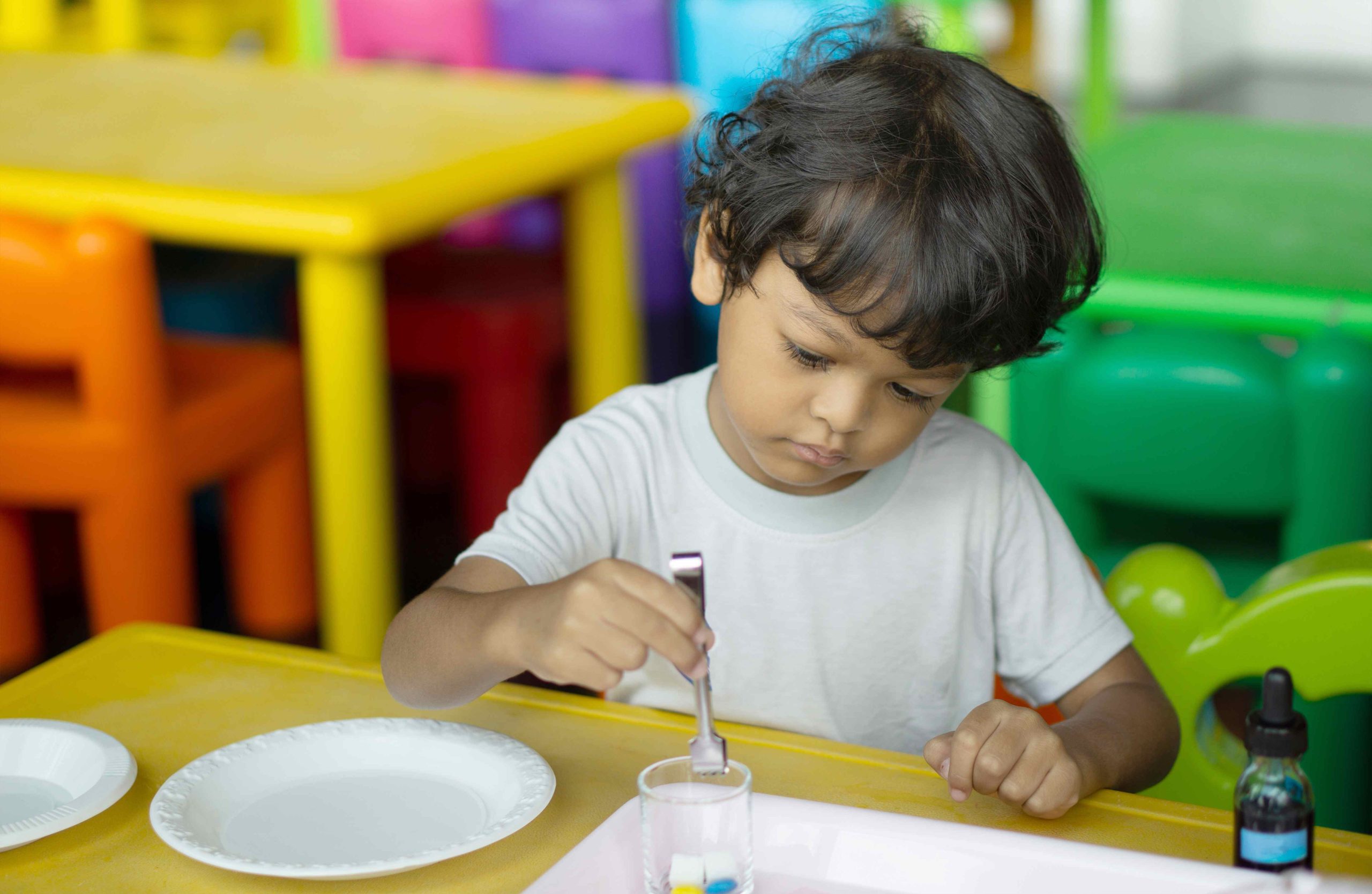
The Importance of Hands-On Learning in Pre-K Preschool Syllabus
We aim to guarantee our preschoolers the finest learning experience possible as parents. Choosing the right preschool syllabus can be daunting, but it’s crucial in their early development. Hands-on learning is one of the most successful methods of teaching preschoolers.
In this post, we’ll look at what hands-on learning is, why it’s important, and how it may be included into the curriculum of a pre-K preschool.
What is Hands-On Learning?
Hands-on learning is an interactive teaching approach that allows preschoolers to learn through physical experiences, exploration, and discovery. It involves actively engaging in the learning process through sensory experiences, such as touching, feeling, smelling, and tasting.
Hands-on learning is based on the premise that toddlers learn best when they are engaged in the process of learning. They are more likely to recall and apply what they have learned if they use all of their senses.
Why is Hands-On Learning Important for Pre-K Preschoolers?
Develops Fine and Gross Motor Skills
Hands-on learning helps develop fine and gross motor skills. Preschoolers are given opportunities to explore and manipulate objects, which helps strengthen their hand-eye coordination and motor skills. Activities like drawing, painting, and building with blocks can help improve their grip strength, dexterity, and balance.
Encourages Creativity and Imagination
Hands-on learning stimulates creativity and imagination in preschoolers. They can exhibit their inventiveness and imagination when given opportunities to investigate and experiment. Activities like storytelling, role-playing, and arts and crafts can help them develop their creativity and imagination.
Enhances Cognitive Development
Hands-on learning enhances cognitive development in preschoolers. Through sensory experiences, they are able to learn and understand abstract concepts. Activities like sorting, counting, and measuring can help develop their mathematical skills, while activities like experimenting and observing can help develop their scientific skills.
Improves Social Skills
Hands-on learning improves social skills in preschoolers. They discover how to interact, work together, and collaborate with others through participating in groups.
Activities like group projects, games, and music and movement can help improve their social skills and build friendships.
How to Incorporate Hands-On Learning into Pre-K Preschool Syllabus?
Use Thematic Approach
Thematic approach involves using a theme or topic to teach various subjects. For example, if the theme is “plants,” the preschoolers can learn about the parts of a plant in science, draw and paint plants in art, and learn how to count plants in maths. This method assists preschoolers to draw relationships among various topics and comprehend more about their surroundings.
Use Manipulatives and Props
Manipulatives and props are objects that preschoolers can manipulate to aid in their learning. For example, using blocks to teach counting or using playdough to teach shapes. These manipulatives and props provide preschoolers with concrete experiences that help them understand abstract concepts.
Provide Opportunities for Exploration and Discovery
Preschoolers love to explore and discover. By providing them with opportunities to explore and discover, they are able to learn and remember better. For example, providing them with a nature walk where they can collect leaves and observe insects can help them understand the natural world.
Use Multi-Sensory Approach
A multi-sensory approach involves engaging all the senses in the learning process. For example, using music and movement to teach phonics, or using scents to teach different smells. This method allows preschoolers to learn in a pleasant and engaging manner while also assisting them in remembering what they have learned.
Stimulates creativity and imagination, enhances cognitive development, and improves social skills. By incorporating hands-on learning into pre-K preschool syllabus, preschoolers are able to learn and remember better.
Challenges and Solutions
One of the challenges of incorporating hands-on learning into pre-K preschool syllabus is the need for resources and materials. Nevertheless, many hands-on learning experiences can be carried out using straightforward and low-cost supplies, such as objects discovered outdoors or materials that have been recycled.
Another challenge is the need for adequate supervision and safety measures, especially when working with materials like scissors, glue, or other potentially hazardous items. Parents and teachers must make certain that preschoolers utilize items securely and that their surroundings are secure enough to allow for learning and discovery.
Conclusion
Hands-on learning is a powerful tool for fostering the development of preschoolers. By incorporating it into the pre-K preschool syllabus, educators can provide children with engaging and effective learning experiences that promote their cognitive, social, and emotional growth. With careful planning and creativity, hands-on learning can be integrated into all aspects of the preschool curriculum, helping children develop the skills they need to succeed in school and beyond.


